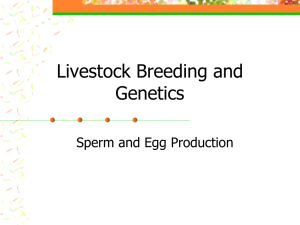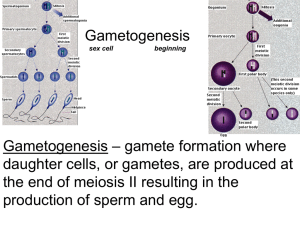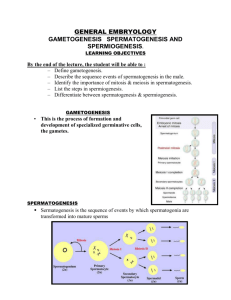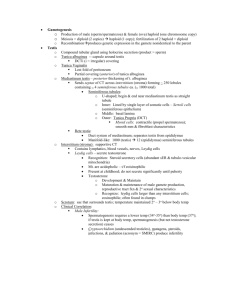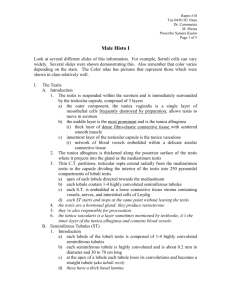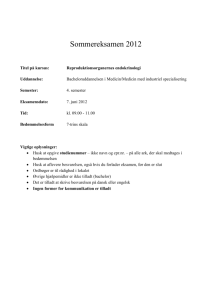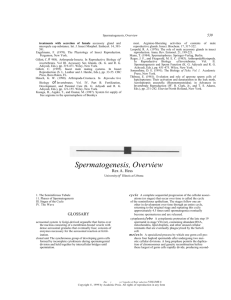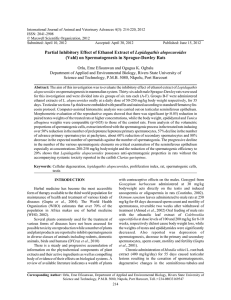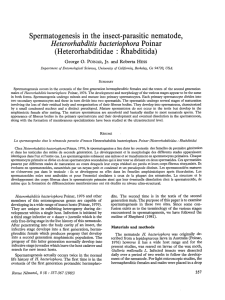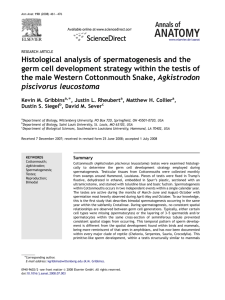Gametogenesis - College of Natural Resources
advertisement
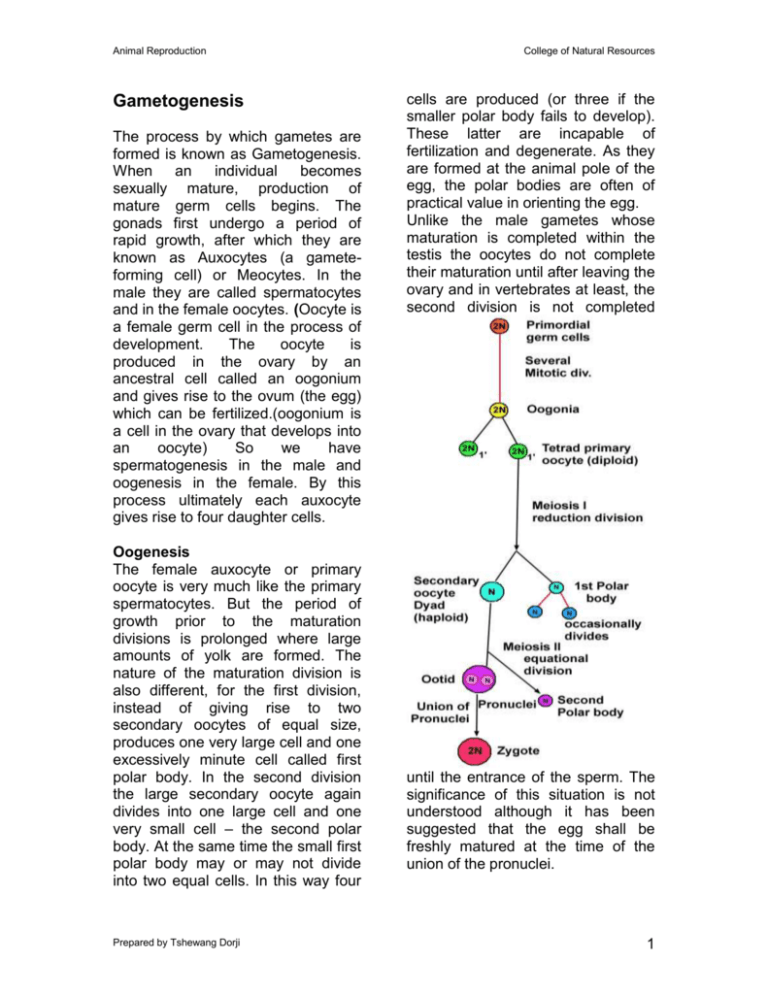
Animal Reproduction Gametogenesis The process by which gametes are formed is known as Gametogenesis. When an individual becomes sexually mature, production of mature germ cells begins. The gonads first undergo a period of rapid growth, after which they are known as Auxocytes (a gameteforming cell) or Meocytes. In the male they are called spermatocytes and in the female oocytes. (Oocyte is a female germ cell in the process of development. The oocyte is produced in the ovary by an ancestral cell called an oogonium and gives rise to the ovum (the egg) which can be fertilized.(oogonium is a cell in the ovary that develops into an oocyte) So we have spermatogenesis in the male and oogenesis in the female. By this process ultimately each auxocyte gives rise to four daughter cells. Oogenesis The female auxocyte or primary oocyte is very much like the primary spermatocytes. But the period of growth prior to the maturation divisions is prolonged where large amounts of yolk are formed. The nature of the maturation division is also different, for the first division, instead of giving rise to two secondary oocytes of equal size, produces one very large cell and one excessively minute cell called first polar body. In the second division the large secondary oocyte again divides into one large cell and one very small cell – the second polar body. At the same time the small first polar body may or may not divide into two equal cells. In this way four Prepared by Tshewang Dorji College of Natural Resources cells are produced (or three if the smaller polar body fails to develop). These latter are incapable of fertilization and degenerate. As they are formed at the animal pole of the egg, the polar bodies are often of practical value in orienting the egg. Unlike the male gametes whose maturation is completed within the testis the oocytes do not complete their maturation until after leaving the ovary and in vertebrates at least, the second division is not completed until the entrance of the sperm. The significance of this situation is not understood although it has been suggested that the egg shall be freshly matured at the time of the union of the pronuclei. 1 Animal Reproduction A good looking egg/oocyte Spermatogenesis Like oogenesis, spermatogenesis also passes through three equivalent stages: (1) The first is the proliferation of the primitive germ cells. (2) The second is the growth period leading to rapid enlargement or growth, (3) The third or the final stage is the maturation stage when the important nuclear changes occur. Spermatozoa arise from the epithelial cells that leave the tubules of the testis. A study of the cross section of the normal mature mammalian testis usually reveals all stages of spermatogenesis. The cells within a tubule are of two distinct types. They are: 1. The Sustenacular cells, also called nurse cells, or Sertoli cells which supply nutrition to the maturing spermatids and possibly produce estrogen. 2. The second are the male germ cells. They are found in various stages of maturation and are arranged in a layered order. Prepared by Tshewang Dorji College of Natural Resources A very immature egg with tightly packed corona and cumulus cells around The spermatogonia and Sertoli cells are relatively inactive until the bull reaches puberty, which occurs when the average bull calf is 9 – 12 months of age. Then the spermatogonia begin to multiply which are of two types in the bull: The A type, which divide only to produce other spermatogonia and the B type, which divide by a similar mitotic division to form two primary spermatocytes. After growth and enlargement of the primary spermatocytes, two nuclear divisions follow. The first gives rise to two secondary spermatocytes from each spermatocyte and the second to two spermatids from each secondary spermatocyte. Thus from each primary spermatocytes four spermatids are formed. The primary spermatocytes while forming secondary spermatocytes go through reduction division. Thus each secondary spermatocyte contains only one half of the number of chromosomes in the primary spermatocytes and it is not any half but one member from each pair of homologous chromosomes. 2 Animal Reproduction College of Natural Resources Prior to the above separation and reduction in chromosome number, each chromosome starts to split lengthwise. At this time there usually occurs twisting of the tetrad which allows for the exchange of chromatin material between the members of the tetrad, i.e. crossing over. The pair members, each of which is partially split, come together and form what is known as tetrad. Primary spermatocyte Primary spermatocyte Prepared by Tshewang Dorji 3 Animal Reproduction College of Natural Resources The secondary spermatocytes after its formation go through a second meiotic division. This process involves homotypic or equational division and the separation of the earlier formed diads. This results in the formation of spermatids, which are smaller than either the spermatogonia or primary spermatocytes and differ from them in having half the original number of chromosomes The newly formed spermatid then enters a series of morphological changes by which it becomes converted into an elongated element with the chromatin material packed in the head, followed by a slender middle piece and behind the middle piece is a whip like tail. Primary spermatocyte Prepared by Tshewang Dorji 4 Animal Reproduction College of Natural Resources Secondary spermatocyte Secondary spermatocyte Prepared by Tshewang Dorji 5
